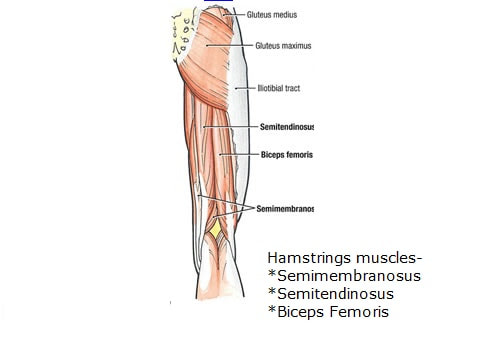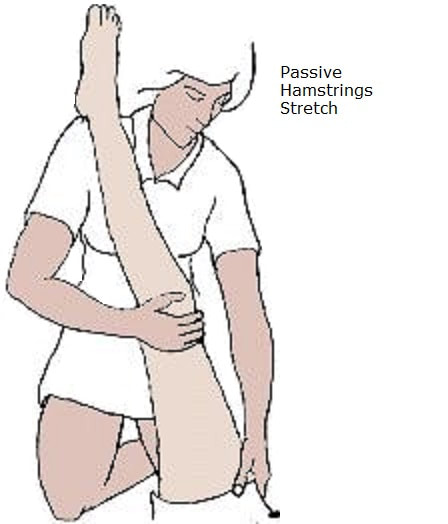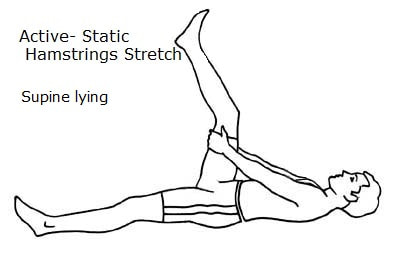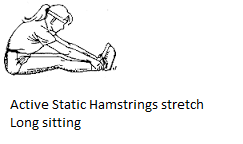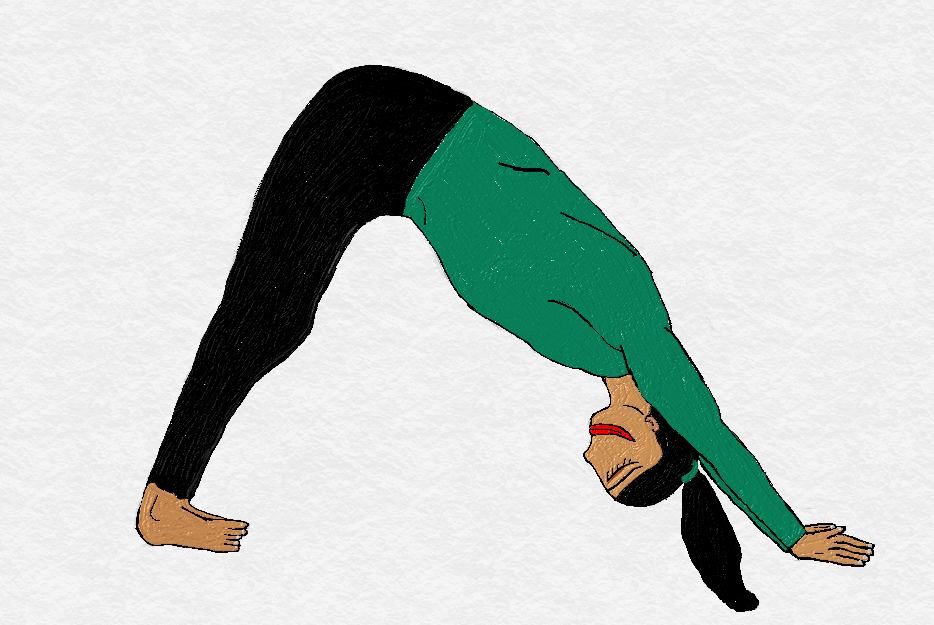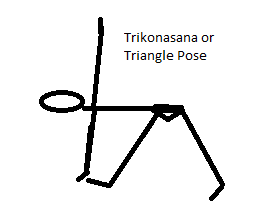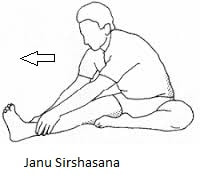|
Continuing with our stretch series from the ground up, we come to the hamstrings stretch.
The hamstrings muscle forms the bulk of the muscle on the back of the thigh. It is made up of 3 muscles, namely the Semitendinosus, the Semimembranosus and the Biceps Femoris. • The semitendinosus, semimembranosus and biceps femoris long head, all originate from the ischial tuberosity or the “sit bone.” • Biceps femoris short head originates from the femur (thigh bone) from a prominent line called the linea aspera and the outer femoral condyle. • As the name implies, the ischial tuberosity is the prominent bony projection of the pelvic bone named ischium (pelvis is formed on each side by the fusion of ilium, ischium and pubis bones). • The Semitendinosus and Semimembranosus insert into the upper medial (inner side of leg) part of the tibial bone. The Semitendinosus with 2 other muscles (Sartorius and Gracilis) forms 1 of the 3 prongs of the duck/goose foot called the “pes anserinus.” • The biceps femoris inserts on the fibular head (lateral or outer side of leg). The hamstring muscle is a two-joint muscle (except the short head of biceps which crosses behind the knee joint only) and crosses behind the hip joint and the knee joint. The contraction of this muscle extends the hip joint and flexes the knee joint, therefore it stretches when the hip flexes with knee extension. It is prone to injury through overuse and strain including sudden athletic injuries playing various sports involving running or jumping. The various ways to stretch this muscle are: (for ease of understanding let us consider stretching of the right hamstrings in all the one-sided stretch positions) 1) Passive stretch: The patient /client lies in supine (facing up) position. The therapist or trained person lifts the right leg by flexing the hip and knee to 90-90 degrees. Then gently straightens the knee joint till a stretch is felt along the back of the thigh. The left leg should be resting on mat/floor in neutral position with a straight knee. 2) Active static stretch: i) This is done in supine position with the trunk supported and stable with pelvis resting on the floor/mat/bed. The left leg is in neutral resting on mat. Start by bending the right leg at hip and knee to bring it to 90-90 position as in above stretch. Hold the right thigh with both hands, just below the knee joint. Slowly, extend the right knee and straighten the leg as far as possible making sure the pelvis and hip is stable. A stretch is felt behind the thigh in the hamstrings muscle. Hold the stretch for as long as possible from 5 seconds to 30 seconds. Release the position by bending the knee and rest for 15-30 seconds. Repeat stretch 2-3 times. ii) Start in the long sitting position and reach for the toes to stretch the hamstrings while keeping the knee stable and resting on the floor while you move forward at the hip, flexing and stretching the muscle proximally at hip joint. Another way is to hold the feet with both hands by flexing the hip and knee, then slowly extending the hip and knee lowering the leg to the floor, while maintaining trunk position. This method keeps the proximal end stable and stretches the muscle/tendon distally, near the knee joint. 3) Active dynamic stretch: Some of the daily activities put this muscle in stretch position as in forward bending. A lot of the yoga asanas such as the mountain pose (parvatasana), triangle pose (Uthitta Trikonasana), forward bending head-to-knee pose (Janu sirshasana) are aimed at stretching the hamstrings. i) Mountain pose: Here both the hamstring muscles are stretched simultaneously. Begin in the quadruped position on a mat and bring the sole of feet to the floor by straightening knees and lifting the pelvis towards ceiling. Bring the head between the arms while gaze is fixed on knees, forming an inverted “V.” Hold the position while inhaling and exhaling completely, you can build up to multiple breath cycles. ii) Triangle pose: Stand with a wide stance feet pointing forward and knees straight with an upright, neutral trunk. Turn the right leg out 90 degrees at hip, so that toes are pointing to the right. Bring both arms up at shoulder level, head turned right, elbows straight, fingers straight, palms open and facing floor, gaze fixed on right thumb. Slowly lower trunk to right by bending at right hip joint and bring the right hand to the right shin. Slide the hand down the shin and bring fingers/hand to the ankle and possibly the floor. For final pose, open up at the chest by bringing the left arm up toward ceiling and rotating head to left for gazing at the left hand now. Hold the pose for 5 seconds to 30 seconds. Release by slowly bringing torso upright and rest for 15-30 seconds. Repeat 2-3 times. iii) Janu sirshasana: Sit up in staff pose or long-sitting position with palms on floor slightly behind the pelvis. Bend the left leg at hip and knee and place sole of left foot along the inner right thigh. Raise both arms up towards ceiling, elongating the spine and reach forward by bending at hip (torso is elongated throughout with minimal rounding of spine at the end of pose). With both hands hold the shin of right leg and slide down during the exhalation in breath cycle to deepen the pose for further stretch of the posterior chain tissue (including hamstrings). Take a deep breath in and hold position and slide hands further down at the next exhalation till you reach end position. You work towards being able to bring the head to right knee, with the knee straight and hands around the sole of right foot. Release pose slowly by raising torso to upright and bending the right knee. Repeat 2-3 times. 4) Stretch using tools or equipment: i) Sit upright on chair with a neutral spine and right knee extended with the foot supported on a stool in front. The left foot is resting on the floor. Keeping the right knee straight, reach forward by bending at hip joints and sliding hands along the right thigh down towards the shin. Spine/trunk should be elongated throughout. Hold for 5- 30 seconds, release and rest for 15-30 seconds. Repeat 2-3 times. ii) Lie on mat/floor with one end of a strap or gait belt looped around the right foot. Keeping left leg in neutral on the floor bring the right leg to 90-90 degree hip-knee flexion. Then holding the loose end of the strap in both hands, pull while extending the knee for stretch behind the thigh. Hold for 5 seconds to 30 seconds for as long as possible, release and rest 15-30 seconds. Repeat 2-3 times. iii) Foam roll stretch: place a firm foam roll on mat or on the floor. Sit with sit bones on the roll with both legs extended at knee joints. Bring both hands with palms on floor behind the foam roll. Bend the left leg bringing the foot to the floor in front of the foam roll. Gently roll the foam roller under body weight back and forth along the back of right thigh from the sit bone to knee joint. This being a long muscle, you can begin from the sit bone (proximally) and roll 2-3 inch segments of the muscle at a time, then move distally.
0 Comments
Your comment will be posted after it is approved.
Leave a Reply. |
Details
AuthorAmi Gandhi is a licensed physical therapist in the state of California. She is the owner of StableMovement Physical Therapy, a small boutique practice in San Jose that offers patient centered, one-on-one, hands-on physical therapy. Archives
March 2018
Categories |
